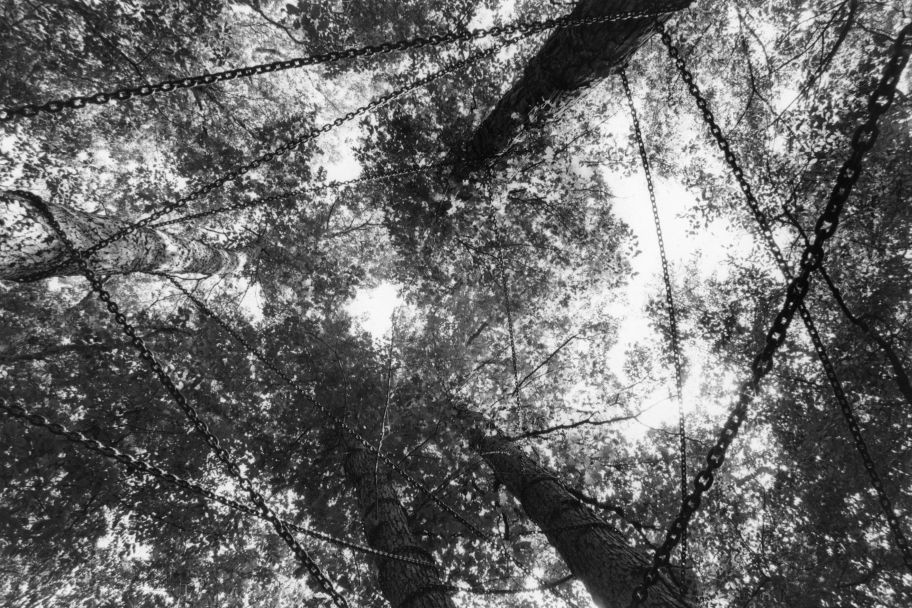USA, Visual Arts, 1978
Agnes
Denes
Agnes Denes (born 1931 in Budapest) was selected for a scholarship from the DAAD Artists-in-Berlin Programme (BKP) in 1978, but was unable to take it up. Her artistic practice, which she also describes as “visual philosophy,” includes poetic and philosophical writings, detailed drawings on graph paper, sculptures, and iconic works of Land Art. In 1972 Denes was a founding member of the A.I.R. Gallery (Artists in Residence, Inc.), the first not-for-profit, artist-directed and maintained gallery for women artists in the United States. Denes pioneered a conceptual form of art that employs scientific methods and addresses ecological issues from a philosophical perspective. Among her earliest works of this kind are Bird Project—sketched when she was still a teenager in Sweden and partially realized in 1988/89 in New York—which compares migrating bird colonies to migrating people, and Rice/Tree/Burial (1968), which is recognized as the first site-specific performance piece with ecological concerns, and was re-enacted in 1977 during Denes’ residency at Artpark in Lewiston, New York. In this symbolic “event,” she planted a half-acre field of rice above the spot where Niagara Falls originally formed; this site, however had also been an industrial dumping ground. A further act involved chaining trees together in a forest, and on August 20, 1979 Denes also buried a time capsule containing students’ responses to existential questions about human values, the quality of life, and the future of humanity. The capsule is to be opened in 2979, in the thirtieth century.
In April 1978, the Artists-in-Berlin Program organized an exhibition of Denes’ work entitled Sculptures of the Mind/Philosophical Drawings, which was shown at the Amerika Haus in Berlin. It featured a number of her serial works that are conceived as analytical exchanges between different disciplines, and mainly take the form of ink drawings on graph paper—including Map Projections: Study of Distortions (1974–76) and Pyramidal Projections, also known as Pyramid Series (1974–76)—, the series Human Dust (1974), as well as a documentation of Rice/Tree/Burial (1977). The Artists-in-Berlin Program published a catalogue to accompany the exhibition.
In 1982, Agnes Denes created what is perhaps her best-known and most ambitious work, Wheatfield–A Confrontation. With the support of the Public Art Fund, she planted a two-acre field of wheat on a landfill site in Lower Manhattan that later became Battery Park City. The crop of wheat was maintained for a period of four months before being harvested. What remains of this project is a series of iconic photographic images of the field of wheat with the Statue of Liberty and the World Trade Center in the background. In 1996 Denes created Tree Mountain–A Living Time Capsule, a monumental earthwork in the form of a man-made forest on a pyramid-shaped mound in western Finland; the site is legally protected for the next four hundred years. The earth sculpture The Living Pyramid, which she originally created in 2005 for the Socrates Sculpture Park in Long Island City, New York, was recreated in 2017 for documenta 14 in Kassel. Denes’ environmentally oriented projects have a particular relevance in today’s world; this is reflected, among others, by the inclusion of Wheatfield–A Confrontation in the 2020 exhibition Down to Earth at the Gropius Bau in Berlin.
Agnes Denes participated in documenta 6 and 14 (1977 and 2017), and took part in the 38th, 39th, and 49th Venice Biennale (1978, 1980, and 2001). Works by Denes are in the collections of the Museum of Modern Art, the Metropolitan Museum of Art, and the Whitney Museum of American Art, New York. In 1992 a retrospective of her work was shown at the Herbert F. Johnson Museum of Art, Cornell University, Ithaca, and in 2019 a comprehensive survey was presented at The Shed, New York.
Text: Eva Scharrer
Translation: Jacqueline Todd



